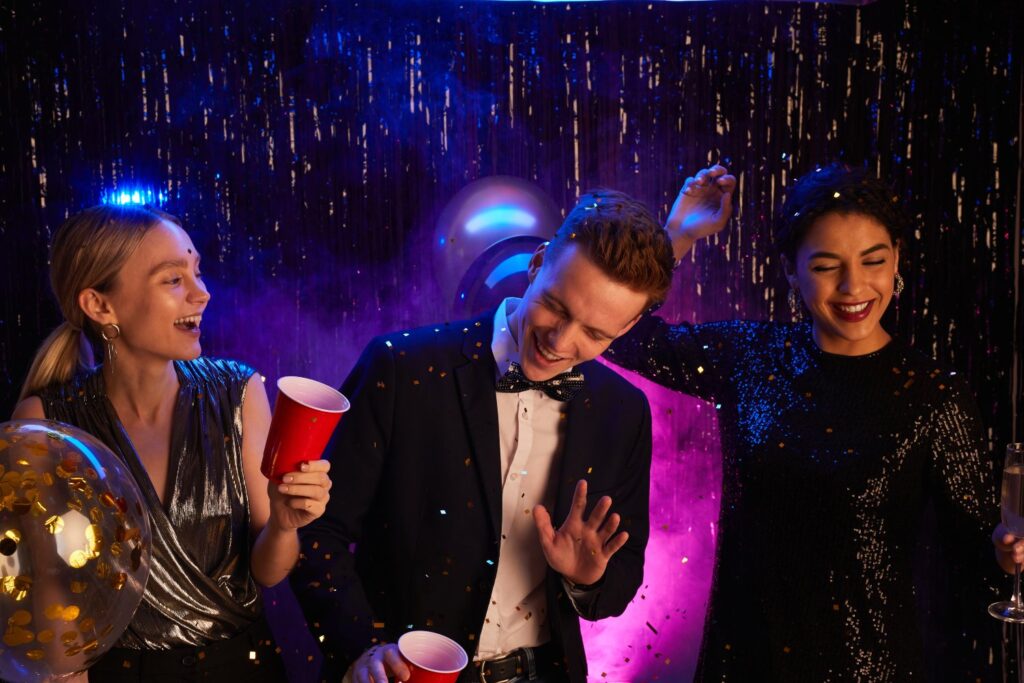In this article, we will explore some of these surprising prom traditions that may surprise you and offer insights into the diverse and fascinating cultures around this momentous event.
Prom is a significant event in the lives of many high school students, as it marks the end of their secondary education and the beginning of a new chapter in their lives.
However, while prom traditions vary from place to place, some unique and surprising traditions might shock you. From the types of dances to the dress codes and the after-party activities, there is no shortage of intriguing prom traditions you may not have heard of before.

Prom Traditions In Various Countries
Many unique prom traditions exist in different parts of the world. Here are some examples.
In Brazil, the prom is known as “Baile de Formatura,” It is typically held at a fancy hotel or reception hall. Students dress up in formal attire, and the event includes a grand entrance, a choreographed dance, and a crowning of the king and queen of the prom.
In Japan, prom is called “en-kai,” typically held in the winter or spring. Students wear formal attire, and the event includes a formal dinner, speeches, and a dance. At the end of the night, the students exchange gifts with their teachers and classmates.
In Sweden, prom is called “studentbalen,” and it is held at the end of the school year. Students typically wear white gowns or suits, and the event includes a traditional dance called the “schottis.” Students also gather outside to sing traditional songs and light candles.
In South Korea, prom is called “seutodeonteu daenseu,” which means “student dance.” Students typically wear formal attire, and the event includes a variety of performances, such as singing, dancing, and skits. To end the prom, the students release balloons into the sky.
In the Philippines, prom is known as “JS Prom,” which stands for Junior-Senior Promenade. Students typically wear formal attire, and the event includes various activities, such as a parade, a fashion show, and a dance. The students exchange roses with their partners as a sign of affection.
Prom Traditions Over The Years
The tradition of prom has changed significantly over the years. Here are some ways that it has evolved.
Gender Roles. In the past, prom was typically a very gendered event, with boys wearing suits and girls wearing dresses. However, in recent years, many schools have become more inclusive, allowing students to wear clothing that matches their gender identity.
Diversity. Prom used to be a very homogeneous event, with most attendees being white and heterosexual. However, as schools have become more diverse, so has prom. Many schools now celebrate the diversity of their student body with multicultural themes and decorations.
Technology. In the past, prom invitations were typically mailed, and photos were developed from film. However, with the rise of digital technology, many aspects of prom have become more digital, such as invitations being sent through email or social media and students taking and sharing photos with their phones.
Music. The music played at prom has changed significantly over the years. In the past, it was typically slow ballads and romantic songs. However, today, students often dance to more upbeat and modern music, such as hip-hop and electronic dance music.
Cost. Prom has become a much more expensive event over the years. In the past, students might have spent a few hundred dollars on a dress or tuxedo. But today, prom can cost thousands of dollars when you factor in the cost of tickets, transportation, attire, and other expenses. This has led to some criticism of prom as exclusionary to low-income students.
Unusual Prom Themes
There have been many unusual prom themes over the years. Here are some examples.
Zombie Prom. The venue is decorated like a post-apocalyptic world, with students dressing up as zombies, survivors, or other characters from horror movies.
Under The Sea. This theme involves creating an underwater atmosphere with decorations like coral, fish, and mermaids. Students might wear outfits inspired by sea creatures or nautical attire.
Enchanted Forest. The venue creates a magical forest atmosphere with decorations like trees, flowers, and twinkling lights. Students might wear fairy tale-inspired outfits or costumes inspired by mythical creatures like unicorns.
Masquerade. Students wear masks and dress up formally, while the venue might be decorated with feathers, beads, and other elegant elements.
Hollywood Glam. This theme involves creating a red carpet atmosphere, with decorations like gold stars, movie reels, and paparazzi cutouts. Students might dress like their favorite movie stars or wear elegant gowns and tuxedos.
Circus. The venue creates a festive carnival atmosphere, with decorations like clowns, acrobats, and circus animals, while students might wear circus-inspired outfits or costumes like lion tamers or tightrope walkers.
Medieval Castle. The venue creates a castle-like atmosphere, with decorations like stone walls, banners, and suits of armor, while students might wear outfits inspired by medieval fashion or dress up as knights and princesses.
Futuristic. This theme involves creating a high-tech atmosphere with decorations like neon lights, metallic surfaces, and robots. Students might wear outfits inspired by science fiction or dress up like space explorers.
Final Thoughts
In conclusion, prom traditions have evolved over time and across different parts of the world, with some surprising and unusual themes emerging.
From zombie proms to enchanted forests, these unique themes showcase the creativity and diversity of students and schools.
As prom continues to change and adapt, it remains a beloved tradition for many students while also prompting discussions about inclusivity, cost, and other vital issues.
Whether you prefer a classic prom or a more unconventional one, prom traditions offer a chance to celebrate the end of the school year and make lasting memories with friends.



